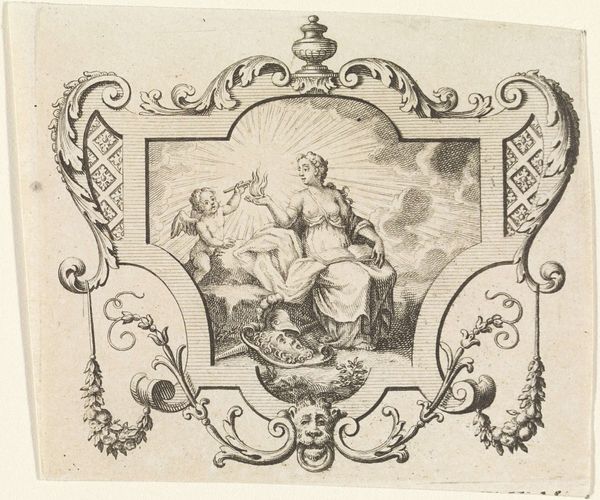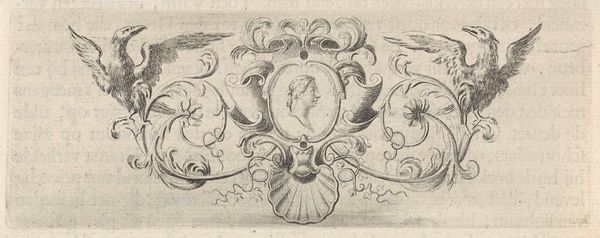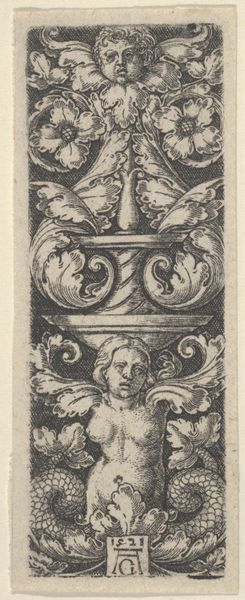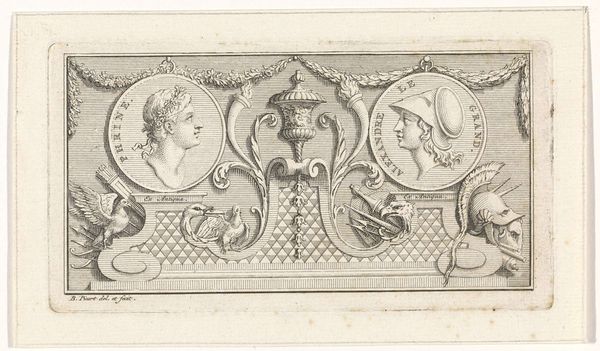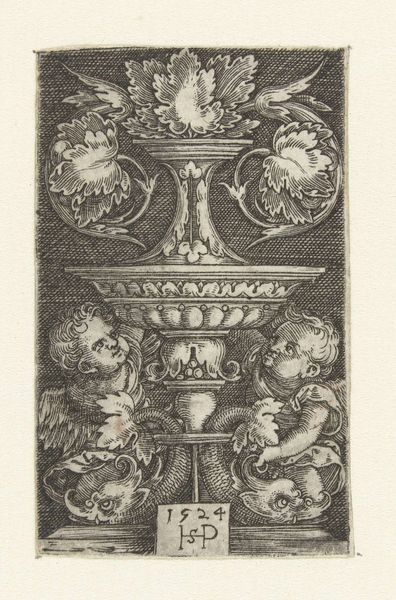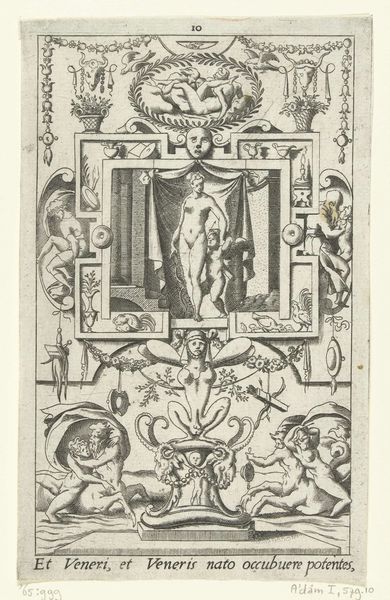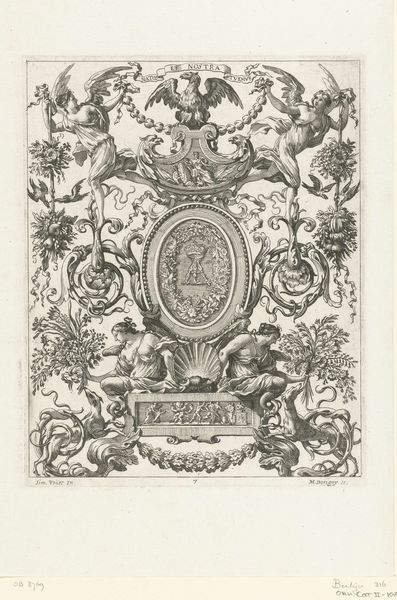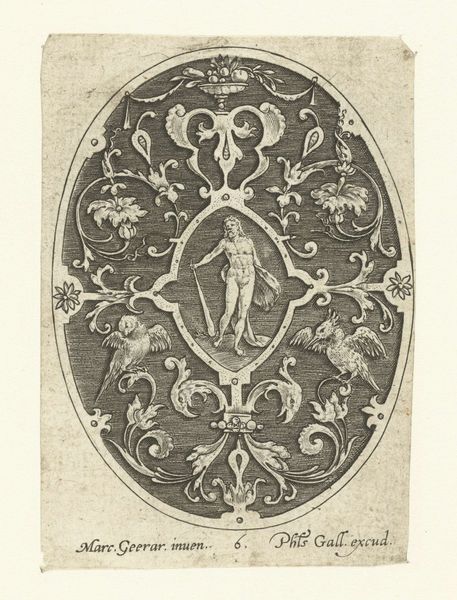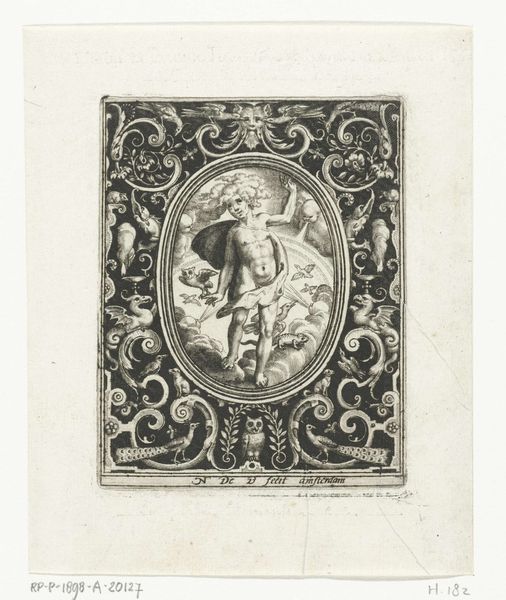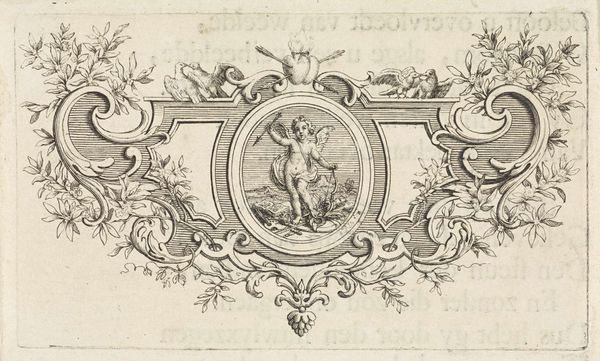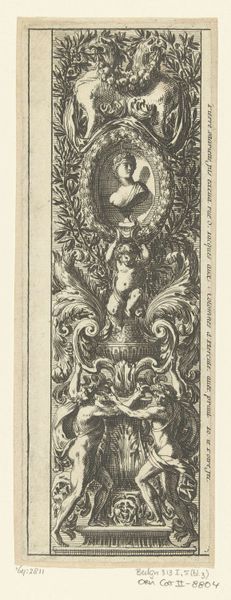
Fries met bladranken ontspruitend vanuit een schildje in het midden 1500 - 1600
0:00
0:00
drawing, print, ink, engraving
#
drawing
#
pen drawing
# print
#
pen illustration
#
pen sketch
#
old engraving style
#
form
#
ink line art
#
11_renaissance
#
ink
#
ink drawing experimentation
#
pen-ink sketch
#
line
#
pen work
#
sketchbook drawing
#
northern-renaissance
#
engraving
#
initial sketch
Dimensions: height 21 mm, width 116 mm
Copyright: Rijks Museum: Open Domain
Curator: Welcome. We're looking at a 16th-century print attributed to Gilich Kilian Proger titled, "Fries met bladranken ontspruitend vanuit een schildje in het midden"—"Frieze with Leaf Tendrils Sprouting from a Shield in the Middle." Editor: It’s a striking pen-and-ink engraving! The density of the line work gives it a very heavy, almost velvety texture. And that central figure, like a chubby little Bacchus, feels incredibly dynamic despite the static medium. Curator: Proger’s expert handling of the engraving technique makes it really impressive. Look closely, and you can see how the controlled lines build up areas of shade, giving form and depth to what is, after all, just a print on paper. There is real labor involved here. I mean look at the evenness in the pressure; that sort of work is physically demanding. Editor: Absolutely. But those stylized leaves also carry a symbolic weight, don't they? The Renaissance fascination with classical antiquity is all over this. We see forms hinting at abundance and prosperity, recurring visual motifs tied to cultural memory and social status, repeated on tapestries, architecture… everything of importance in its day. Curator: Perhaps. Or it could be more functional than symbolic. Maybe a decorative print like this would have been acquired by an artisan to be directly incorporated into another piece. We’re dealing with production processes here, with the transfer of designs. Editor: True, the modular design absolutely suggests it could have been integrated. Yet the very fact it references classicizing elements tells us it was meant to do more than merely decorate; it elevated the status of the object or space into which it was incorporated, associating it with a larger history of visual culture. Curator: Good point! What's interesting to me is how these prints enabled designs to be easily disseminated. Consider how prints influenced everything from furniture to textiles, widening access to "high style" across a much larger class base. Editor: Ultimately, it is both; this leaf design straddles design utility and cultural values. Each looping shape reflects symbolic meaning that’s still, in a sense, alive even now. Curator: Exactly. Examining it closely reminds us of how much skill went into even these apparently small, ornamental objects. It offers valuable insights into the organization of workshops and artisanal economies in that era. Editor: Agreed. And tracing the lifespan of visual motifs enriches our understanding of art. Curator: Very well said!
Comments
No comments
Be the first to comment and join the conversation on the ultimate creative platform.


